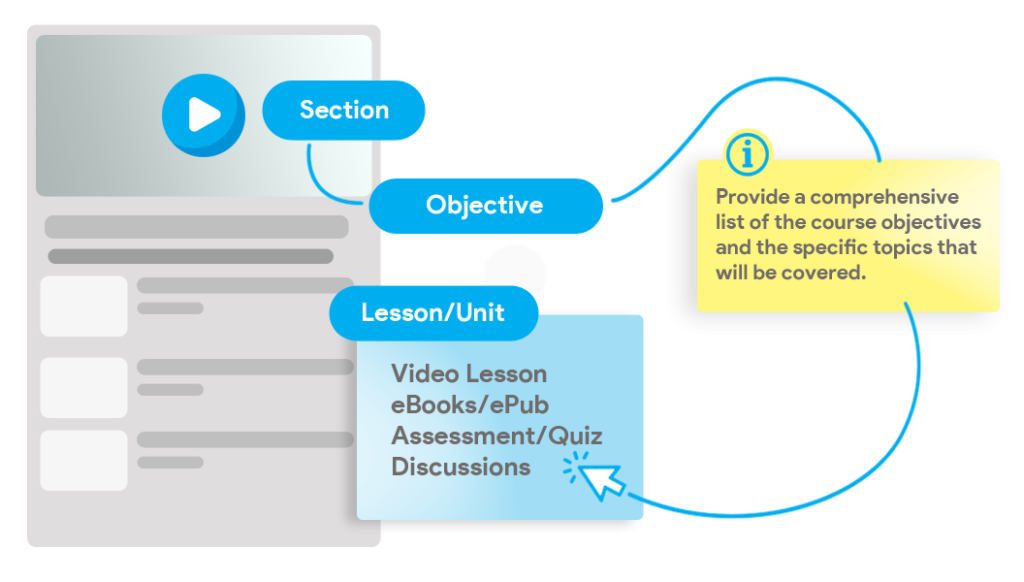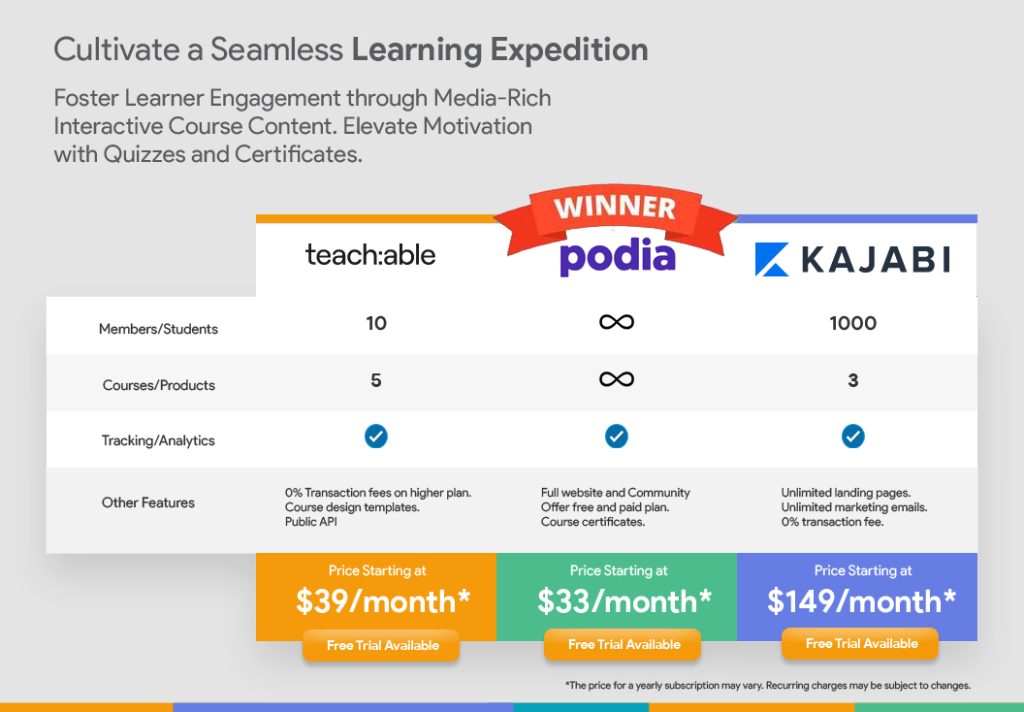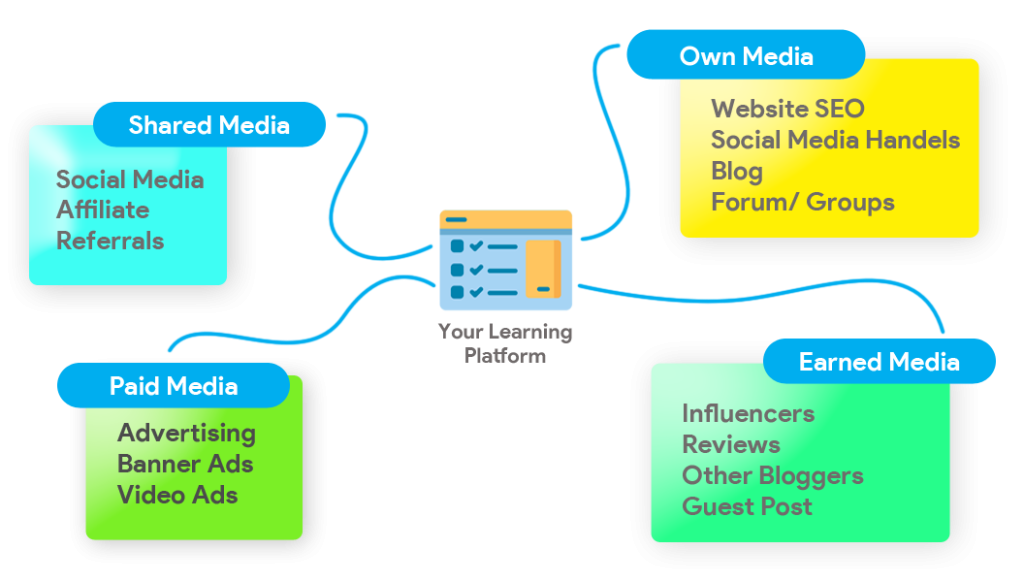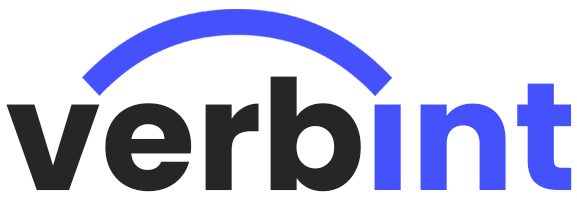Creating an online course comes with a multitude of benefits that can greatly enhance your professional growth and success. One of the main advantages is the opportunity to reach a broader audience. Unlike traditional in-person teaching, an online course removes geographical barriers and allows you to connect with students from around the world. This expanded reach not only increases your potential revenue but also opens doors for collaboration and networking opportunities.
Another key benefit of creating an online course is the ability to establish yourself as an expert in your field. By sharing your knowledge and expertise through a structured curriculum, you position yourself as a trusted authority figure. This can lead to speaking engagements, consulting opportunities, and even media exposure. Additionally, developing an online course requires thorough research, organization, and communication skills, all of which are highly valued in today’s job market.
Moreover, creating an online course enables you to have flexible working hours while earning passive income. Once you have put in the effort upfront to create high-quality content, you can continue generating revenue from enrollments without actively teaching every single day. This freedom allows you to focus on other aspects of your career or pursue personal interests while still bringing in financial stability.
A step-by-step guide to building your own online course in just 12 simple steps!
- Define your course topic
- Defining what students will achieve by the end of the course
- Plan your course structure
- Create engaging course content
- Comparing different learning management systems (LMS)
- Record and edit course videos
- Implement assessments and feedback mechanisms
- Launch and market your course
- Engage with your students
- Continuously improve your course
- Monitor and analyze course performance
- Offer ongoing support and updates
1. Define your course topic
Finding the course topic that matches your interests and abilities requires you to first recognize your areas of expertise and passion. Your knowledge and abilities that you have picked up through schooling, training, or work experience are referred to as your expertise. On the other hand, passion describes the pursuits or topics that pique your interest and motivate you.
Consider your educational background, professional experience, and any specialized training you have undergone to determine your expertise. Think about the topics or fields in which you have excelled or learned a lot. These topics can act as the basis for your course’s topic.
Investigate your interests next. Consider the things or subjects that genuinely interest you and give you a sense of vigor. These could be pastimes, interests, or causes close to your heart. Finding your passion will enable you to develop a course topic that you can fully commit to.
Look for areas where your expertise and passion overlap once you have determined what they are. You’ll gain a distinctive viewpoint and a market advantage from this intersection. You could develop a course on sustainable marketing techniques, for instance, if you are an expert in marketing and are passionate about sustainable living.
Researching market demand and competition:
Researching the market demand and competition for your course topic is crucial after determining your areas of expertise and passion. This step will assist you in determining whether there is a market for your program and how to distinguish yourself from rivals.
To find the audience for your course’s target audience, start by conducting market research. Decide who would profit from your knowledge and enthusiasm. To determine the level of competition, look for existing courses or educational resources in your field of choice. Examine their target market, pricing, and content to find any gaps or opportunities to stand out.
To get feedback from prospective students, think about using online forums, social media groups, and surveys. This will assist you in comprehending their requirements, preferences, and problems. Investigate keyword research tools as well to find well-liked search terms associated with the subject of your course. This will help you optimize your course content for search engines and provide you with insights into the demand for your topic.
Additionally, research other course designers or subject-matter authorities to analyze the competition. Examine their methods of instruction, course designs, pricing policies, and client testimonials. Describe how you differ from them and how you can provide learners with a special value proposition.
You can develop a course topic that is both aligned with your interests and meets market demands by fusing your knowledge, passion, and market research. To remain competitive, keep an eye on the market and update your course materials based on student feedback and new trends.
2. Defining what students will achieve by the end of the course
Effective teaching and learning require the establishment of clear learning objectives. Teachers give themselves and their students a road map by outlining exactly what they expect from them by the end of the course. Clarity aids in instruction focus and guarantees that students are aware of the expectations placed upon them.
The first step in defining the outcomes that students will achieve after completing the course is to pinpoint the essential competencies, knowledge, and skills that they need to have. This can be achieved by reviewing the curriculum, consulting standards for the relevant subjects, and taking the students’ needs and interests into account. For instance, a learning objective in a science course might be for students to comprehend the concepts of electricity and magnetism.
Once the overarching learning objective has been established, it is critical to deconstruct it into quantifiable results. Measurable outcomes are distinct, visible behaviors that prove an individual has mastered the learning objective. These results give a definite indication of whether or not students have learned what is intended.
Teachers can think in terms of Bloom’s Taxonomy or other frameworks to help them break goals down into quantifiable results. For instance, if the goal is for students to comprehend the fundamentals of electricity and magnetism, measurable outcomes might include the capacity to describe how electricity and magnetism interact, resolve issues involving electrical circuits, and create straightforward experiments to study electromagnetic phenomena.
Teachers give students a clear direction and purpose for their learning by setting clear learning objectives and breaking them down into quantifiable outcomes. This clarity aids in concentrating instruction, directing methods of assessment, and ultimately improving student achievement.
3. Plan your course structure
The organization of the content into modules and lessons is crucial when designing the structure of your course. Lessons divide the modules into more manageable, smaller units, while modules serve as overarching themes or topics. This subsection helps students complete the course and comprehend the order in which concepts are introduced.

For effective learning, the material must be presented in an organized manner. It entails structuring the material in a manner that builds on prior understanding as well as gradually introduces new ideas. This orderly progression makes sure that students are able to comprehend the information correctly.
Start by choosing the main modules or topics you want to cover as you plan the structure of your course. Following that, split them into smaller lessons that focus on particular skills or subtopics. When arranging the material, take into account the complexity and interdependencies of the subject matter. Introduce more complex topics gradually after introducing the basics.
For each lesson, don’t forget to include clear instructions, learning objectives, and assessments. To engage students and strengthen their understanding, think about incorporating a variety of learning activities, such as quizzes, discussions, or practical exercises. You can design a course with a clear structure that encourages effective learning by segmenting the content into modules and logically ordering them.
4. Create engaging course content
Effective online learning depends on having interesting course material. In order to accomplish this, teachers need to focus on two crucial elements: selecting the appropriate multimedia components and including interactive lessons.
- Selecting the appropriate multimedia components, such as slides, quizzes, and videos, is crucial for grabbing students’ attention and promoting understanding. Videos can be used to explain difficult ideas in an interesting and visually appealing way. Slides can be used as visual aids and to summarize important points. Tests can be used to evaluate student knowledge and encourage engaged learning. It’s crucial to pick multimedia components that support various learning styles and correspond with the course objectives. The multimedia components must be of a high standard, easily accessible, and well integrated with the learning platform, according to the instructors.
- Including interactive exercises is an additional effective method to raise students’ levels of interest. Activities that involve active participation encourage deeper learning. Activities such as discussions, group projects, case studies, simulations, and gamified exercises are all options for instructors. These tasks give students the chance to put their knowledge to use, work together with their peers, and receive immediate feedback. The interactive activities that instructors create must be informative, challenging, and related to the course material. For optimal student participation, they ought to provide straightforward instructions and guidelines.
5. Comparing different learning management systems (LMS)
Because there are so many choices on the market, it can be hard to choose the right online platform for learning. Along with the capabilities they provide, the simplicity of use and cost of various learning management systems (LMS) should be compared.
A key factor to take into account when choosing an LMS is ease of usage. The platform should have an easy-to-use interface that is simple and straightforward to explore. It shouldn’t need substantial training or specialized knowledge to operate. Both instructors and students may quickly access and manage the learning materials with the help of a well-designed LMS’s clear instructions and sensible interface.
Another important aspect to think about is price. Various LMS providers provide a range of pricing structures, including annual or one-time fees.

It is crucial to assess the pricing structure to see if it fits within your spending limits and demands. Assessing if these capabilities are important for your unique needs is crucial because other LMS platforms may offer extra functionality at higher pricing ranges.
Any LMS must include features that are essential. While an LMS’s main functions include tools for creating courses, managing content, and assessing student progress, more features can improve the learning process. Support for many media formats, discussion boards, progress monitoring, and connectivity with other programs or platforms are a few crucial elements to take into account. Prioritize the elements that are most crucial for achieving your learning goals, and make sure the LMS you choose has access to them.
Making a list of the desired characteristics and comparing each platform against them is advised in order to successfully compare various LMS platforms. Reading reviews and getting recommendations from other users or academic institutions can also be very helpful in learning about the advantages and disadvantages of various LMS choices.
6. Record and edit course videos
Setting up a suitable recording environment
When it comes to recording course videos, creating a suitable recording environment is crucial for ensuring high-quality and professional-looking content. Here are some key considerations to keep in mind:
- Lighting: Good lighting is essential for clear and visually appealing videos. Natural light is often the best option, so try to position yourself facing a window or use soft, diffused lighting sources. Avoid harsh shadows or overly bright backgrounds that can distract viewers.
- Background: Choose a clean and uncluttered background that is relevant to the course content. A plain wall or a neatly arranged bookshelf can work well. Make sure there are no distractions or personal items that may divert attention from the main subject.
- Sound quality: Clear audio is crucial for effective communication. Use a good quality microphone to ensure your voice is crisp and easily understandable. Consider using a separate microphone instead of relying on the built-in microphone of your recording device. Also, minimize background noise by recording in a quiet room and using soundproofing materials if necessary.
- Camera setup: Position your camera at eye level or slightly above to create a natural perspective. Use a tripod or a stable surface to avoid shaky footage. Ensure that the camera is focused and properly framed, with enough headroom and space around you.
Editing videos for clarity and professionalism
Once you have recorded your course videos, the next step is to edit them to enhance clarity and professionalism. Here are some editing tips to consider:
- Trim and cut: Remove any unnecessary footage or mistakes to keep the video concise and engaging. Cut out long pauses, stutters, or irrelevant content that may distract viewers from the main message.
- Enhance audio: Adjust the audio levels to ensure a consistent volume throughout the video. Remove background noise, if any, using audio editing software. Add background music or sound effects, if appropriate, to enhance the overall experience.
- Add visuals: Incorporate relevant visuals such as slides, diagrams, or text overlays to support your explanations. Use transitions and animations to make the video visually appealing and easy to follow.
- Branding: Add an intro and outro with your course branding, including your logo, course title, and any relevant contact information. This helps create a consistent and professional look across all your course videos.
- Review and revise: Watch the edited video multiple times to ensure there are no errors or inconsistencies. Pay attention to the pacing, flow, and overall coherence of the content. Make any necessary adjustments to improve the video’s clarity and professionalism.
7. Implement assessments and feedback mechanisms
A crucial component of designing an online course that aids students success is incorporating assessments and feedback tools. You can assess students’ performance by creating assignments and quizzes and determining where they might need more assistance. Depending on what works best for your course, these exams may be in several formats, such as multiple-choice questions or short answers. Don’t forget to give feedback as well! Giving students timely feedback on their work allows you to encourage them to continue learning and growing rather than merely pointing out what they did well or poorly. Feedback enables students to identify their strengths and areas for improvement. Therefore, by incorporating assessments and feedback into your course, you’re fostering a positive and interesting learning environment that aids students in achieving their objectives.
8. Launch and market your course
Just as crucial as creating the course content itself is launching your online course. You must effectively market and promote your new offering if you want to attract students. Make a captivating and educational course landing page first. Considering that this is frequently the first impression prospective students will have of you, be sure to give them information that will compel them to enroll in your program.

Outline the course objectives and the delivery method using headlines, bullet points, images, and videos. The landing page ought to entice students to learn more and, ideally, offer a simple means of enrollment. Use a variety of marketing techniques in addition to a strong landing page to raise awareness. Utilize the social media channels you use, such as Facebook, Twitter, and LinkedIn, to share excerpts from your course material and direct traffic back to the landing page. Additionally, you can market your course to your contact list by sending email marketing campaigns. To increase early enrollment, take into account offering time-limited discounts or free trials. The use of relevant industry blogs and influencers for potential collaborations or endorsements is another tactic. You can successfully launch your new course and begin enticing your first students by implementing an integrated marketing approach both online and offline.
9. Engage with your students
Engaging with your students is crucial to their success and satisfaction with the course. One way to encourage active participation is through the use of discussion forums where students can exchange ideas, ask questions, and continue the conversation beyond the classroom. Post thoughtful discussion prompts on the weekly course material to get a dialogue going. Make yourself regularly available in the forums to guide the discussion, answer questions, and provide additional resources or perspectives. This fosters a sense of community as students learn from you and each other. In addition to forums, it’s important to provide timely responses to any queries or concerns students bring directly to you. They will appreciate quick replies, usually within 24-48 hours, to show you care about their learning experience and any issues they encounter. Be approachable, sympathetic, and solution-oriented in your responses. Addressing problems promptly helps reduce frustration and prevents students from dropping the course. Engaging with your students on an ongoing basis, both collectively through forums and individually via direct messages, ensures they feel supported in their learning journey.
10. Continuously improve your course
To keep your online course relevant and engaging for students, it’s important to continuously improve it over time. One of the best ways to do this is by collecting feedback from students on their experience and suggestions for enhancement. You can implement mid-course and end-of-course surveys to understand what is and isn’t working well. Ask targeted questions about content, pacing, activities, assessments, and the overall platform’s usability. Analyze the feedback for trends and implement reasonable improvement ideas in future course updates. For example, reworking unclear lecture videos based on student feedback. In addition to student input, stay up-to-date on the latest industry trends by following thought leaders, attending conferences, and reading industry publications. New technologies, teaching methods, or topics of focus will emerge over time. Consider incorporating relevant trends into your course to keep the material fresh. For instance, including new case studies, data, or tools that were not available when the course first launched. Regularly adding a portion of new content with each update will keep veteran students as well as attract new enrollments. Continuous improvement is key to maintaining high student satisfaction rates and strong enrollment over the long run. It also allows you to showcase your commitment to excellence and lifelong learning.
11. Monitor and analyze course performance
Tracking key metrics and analytics will help you keep an eye on your online course’s performance over time and make necessary improvements. The weekly or monthly student enrollment figures are one of the first metrics you should monitor. You can then assess enrollment trends and whether your marketing efforts are successfully reaching the target market. Along with enrollments, you should also pay close attention to course completion rates. It may be possible to identify areas where students may be struggling or losing motivation by keeping track of how many students complete the course versus drop out. It’s also critical to gather student feedback surveys at the midpoint and end of the course. It is possible to identify areas of the course design, content delivery, or platform usability that require improvement by looking for trends in the feedback.
You must delve deeper into the analytics offered by your learning management system (LMS) if you want to truly optimize the student experience and learning outcomes. Analytics dashboards are a common feature of LMS platforms and offer a wealth of quantitative performance data. You can see statistics like the typical amount of time spent on a lesson, the frequency with which quizzes and assignments are turned in, the most popular discussion topics, and more. By carefully examining this behavioral data with the help of the built-in analytics tools, it is possible to identify very specific areas in which students may be struggling or losing interest. This might be a particularly challenging concept that needs more explanation, or the lesson might be moving too quickly or slowly.
You can learn a lot about how well your course is doing on various levels by tracking enrollment, completion rates, feedback, and utilizing the analytics features. You can identify your strengths and areas for improvement thanks to this thorough and ongoing monitoring. The information can then be used to inform evidence-based decisions about how to improve course content, organization, and delivery in order to continuously improve learning outcomes and experiences.
12. Offer ongoing support and updates
To keep students engaged and successful, it’s important to offer ongoing support after they complete your online course. One way is by providing access to any future updates made to the course content and materials. This ensures they have the most current information. You should also continuously share additional optional resources that can help reinforce key lessons. Offering lifelong access to supplemental materials encourages students to keep learning beyond just completing the course. Equally crucial is having a support system for students facing difficulties applying what they learned. They may have implementation questions down the road. By being available to help even after course completion, you build loyalty and ensure positive outcomes for students in the long run.
In conclusion, this post provided an overview of the key steps to creating a successful online course. From defining your topic and setting learning objectives to developing engaging content and selecting a platform, each step in the process was explored in detail. Creating supplementary materials, implementing assessments, and engaging and supporting students were also covered as important elements for an effective course. Continuous improvement through monitoring performance, collecting feedback, and incorporating updates keeps a course fresh. While the process may seem daunting, all the necessary information is now at your fingertips to get started. I encourage you to take what you’ve learned here and start creating your own online course. Share your knowledge and expertise with the world. With dedication and by following these steps, you too can develop a high-quality, impactful course experience for lifelong learners everywhere. I wish you the very best in your online teaching journey.
